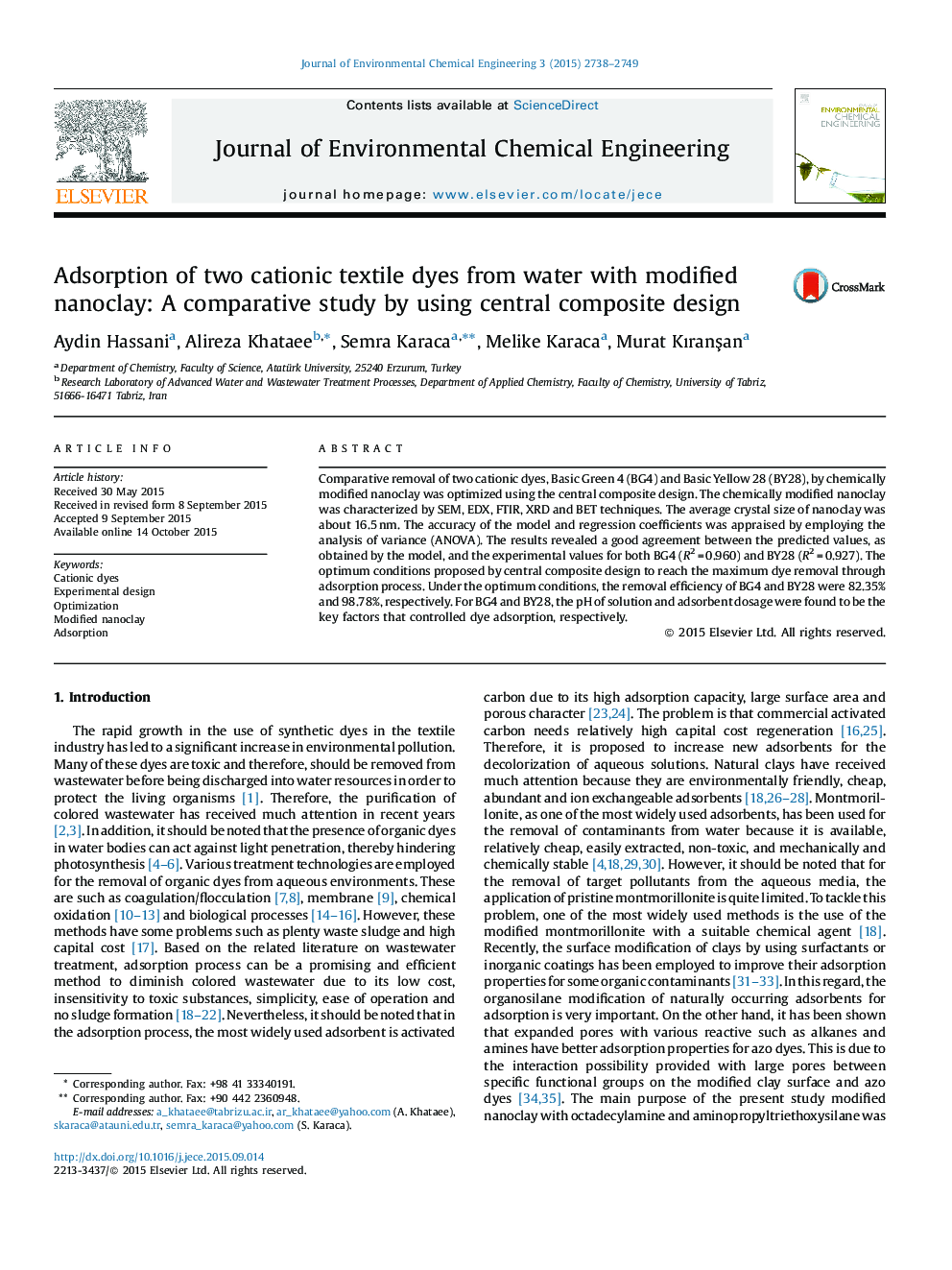| Article ID | Journal | Published Year | Pages | File Type |
|---|---|---|---|---|
| 222079 | Journal of Environmental Chemical Engineering | 2015 | 12 Pages |
•Comparative adsorption of two cationic dyes using chemically modified nanoclay.•Characterization of the modified nanoclay by SEM, EDX, XRD, BET and FTIR.•Optimization of the adsorption process by central composite design.
Comparative removal of two cationic dyes, Basic Green 4 (BG4) and Basic Yellow 28 (BY28), by chemically modified nanoclay was optimized using the central composite design. The chemically modified nanoclay was characterized by SEM, EDX, FTIR, XRD and BET techniques. The average crystal size of nanoclay was about 16.5 nm. The accuracy of the model and regression coefficients was appraised by employing the analysis of variance (ANOVA). The results revealed a good agreement between the predicted values, as obtained by the model, and the experimental values for both BG4 (R2 = 0.960) and BY28 (R2 = 0.927). The optimum conditions proposed by central composite design to reach the maximum dye removal through adsorption process. Under the optimum conditions, the removal efficiency of BG4 and BY28 were 82.35% and 98.78%, respectively. For BG4 and BY28, the pH of solution and adsorbent dosage were found to be the key factors that controlled dye adsorption, respectively.
Graphical abstractChemically modified nanoclay with predominantly mesoporous nature for the removal of two textile dyes.Figure optionsDownload full-size imageDownload as PowerPoint slide
